My album database (yes, I have an album database, doesn’t everybody?) shows that I have more Albums by the Beatles than any other artist, by a wide margin. But if I were able to count by how many times an artist simply appeared on or participated in a record in some fashion, I think Eno would win it. He’s just all over the place.
So, as promised, here’s a quick rundown of records Brian Eno was involved with, limited, of course, by my knowledge:
Eno As Bandmate:
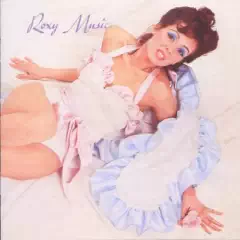 Roxy Music
Roxy Music (1972)
Their first, with a lot of weird but infectious tunes and Phil Manzanera playing some great guitar. It almost all comes together, too, especially when they just. rock. out. I suspect Eno’s one reason it doesn’t. But Bryan Ferry’s hyper-vibrato (think the Little Rascals dog Petey on the weight loss machine) is kind of off-putting, too.
B+
"Virginia Plain"
 For Your Pleasure
For Your Pleasure (1973)
I already had this disappointing record on cassette and thought I’d give it another try on CD. Maybe the sound would be better. And it is, a bit, but not the music.
Their first record at least seemed to be the product of a single (demented) mind. This one has two sensibilities at war with neither one winning.
Bryan Ferry was the lead singer/songwriter of the band and arch-nemesis of Eno. It just goes to show you can only have one Brian in a band at a time, and if you have to have two, for heaven’s sake have them spell it the same way.
It was probably a good thing Eno split. Both he and Roxy Music would go onto better things, like one of my all time favorites
Siren.
But they’re not there yet.
B+
“Do the Strand”
Eno Goes Solo:
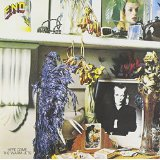 Here Come the Warm Jets
Here Come the Warm Jets (1974)
His first solo record after leaving Roxy Music, he’s now unleashed and comes on like gangbusters.
Jets is an aggressively harsh and twisted affair, yet with some wonderful tunes mixed in.
Weird and fun and in your face. it’s a favorite of Enophiles. He’s got something to prove, but I think he’s trying to do too much at one time. He’d soon settle in for the long haul, and learn to modulate the craziness. He’s only getting started.
B+
“Cindy Tells Me”
 Taking Tiger Mountain (By Strategy)
Taking Tiger Mountain (By Strategy) (1974)
His second, and my favorite of the pop-oriented ones.
At first,
frustrating but it would grow on me. And hearing it again after all these years, the experiments work, and the willfully weird stuff is just plain fun. The production is clearer here and he’s not trying so hard. The songs are more tuneful and imaginatively arranged overall.
Sorry
Friend Mike , but this one’s made me what I am today (which may explain a lot more than I had in mind).
And while I’ll admit, it’s still not “going to the beach” music, it is music for a long drive. Mrs. Jaybee specifically requested it while coming home from a long weekend away last month.
A
“Mother Whale Eyeless”
 Another Green World
Another Green World (1975)
And here is where the big change occurs. He’d been preparing for it on
side projects with
Robert Fripp.
He takes a step back from the everything-and-the-kitchen-sink approach of the prior two records. Instead, this one is minimal, and mostly instrumental, but eerie, beautiful, serene, and a little scary. It’s still in my all-time top five.
And he would continue down this path for many years.
One could argue that New Age starts here, but at best it’s a stepchild, albeit one that made all the cash. See
Pure Moods.
Instead of the warm embrace of simple “prettiness” the Eno I know always holds back a little, or throws a monkey wrench in. And I wouldn’t have it any other way.
A+
“Everything Merges With the Night”
 Discreet Music
Discreet Music (1975)
And he goes even further - and maybe too far - here, devoting side one to 30 minutes of slightly varying tape loops that result in a kind of background music but with ever-shifting tones. He says it’s intended to be played at a volume just below audible, which is just one step away from
4’33, if you ask me. I still want to hear the damned thing, after all.
But when you do, you kind of know where he’s coming from with it. In its way, the very definition of serenity.
Side two comprises three slightly different experimental takes on Pachelbel’s Canon that are each nice enough, but when played one after the other, a bit much.
So, not a bullseye, but very worthwhile.
B+
"Discreet Music"
 Before and After Science
Before and After Science (1978)
He pulls back a little here, coming back to earth on side one. which is devoted to pop-oriented cuts, but then goes off into space again for most of side two, which is quite lovely.
Overall a good summation of what he was up to at the time.
A-
“Spider and I”
 Ambient 1: Music for Airports
Ambient 1: Music for Airports (1978)
One cut, a simple piano figure played over and over. Another, harmony vocals only Another a combination of the two. And finally a vintage Eno synthesizer buzz out.
Ambient? I guess. But simple and beautiful.
A-
“1/1”
Eno the Collaborator:
The big mystery for me is what the hell he was doing in 1976.
But in 1977 he goes to Berlin with David Bowie.
 Low
Low (1977)
Hard, sloppy rock on side one, and very Eno ambient on side two. Arguably my favorite Bowie album.
A-
“Subterraneans”
 “Heroes”
“Heroes” (1977)
The same structure as Low. The rock on side one is edgier and and the ambient on side two more daring. Overall, very good, Low edges it out slightly. A-
“Moss Garden”
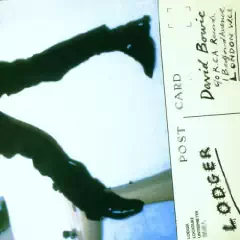 Lodger
Lodger (1979)
The experiments here are in the songs themselves rather than the sound. A perfectly good record, but the weakest of the three.
B+
“Boys Keep Swinging”
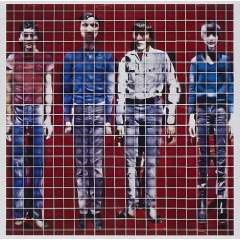 Talking Heads: More Songs About Buildings and Food
Talking Heads: More Songs About Buildings and Food (1978)
And then in 1978 he heads to NYC. And when you hang around the coolest places, you meet the coolest bands. And so now he acts as producer and fifth band member of Talking Heads, shifting them (and me) into a different direction. Melodic, harsh, funky, beautiful. One of my all time favorites. Definitely in the top 25.
A
“The Big Country”
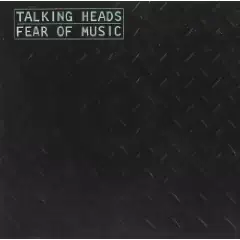 Fear of Music
Fear of Music (1979)
This one’s a bit of a letdown because David Byrne’s songwriting opts for the weird instead of the melodic. Not Eno’s fault, I don’t think.
B+
“Paper”
 Remain in Light
Remain in Light (1980)
Ah, now that’s better! The songwriting and the band and Eno are all on one page and the results are wonderful. But by now the other Heads want to toss Eno out of the band.
A-
“Born Under Punches”
 David Byrne/Brian Eno: My Life in the Bush of Ghosts
David Byrne/Brian Eno: My Life in the Bush of Ghosts (1981)
This was actually being worked on before
Remain in Light and can be seen as the intense experimentation that would eventually lead to the relatively pop(!) of that record. Made up of snippets of radio broadcasts of some very charismatic preachers (the main inspiration for David Byrne’s vocals on
RIL), and the musical arrangements designed to fit around their vocal tics and rhythms. This works a lot better than one would expect. Not for parties, but very intense and interesting throughout. B+
“Help Me Somebody”
 David Byrne: The Catherine Wheel
David Byrne: The Catherine Wheel (1981)
Music from the dance production of the same name, and a great balance of songwriting and overall sound. Eno’s really just a sideman here. Officially at least. But the music is right out of Eno territory throughout. An extremely underrated record. A
“Two Soldiers”
 Jon Hassell/Brian Eno: Fourth World: Possible Musics
Jon Hassell/Brian Eno: Fourth World: Possible Musics (1981)
A collaboration with
Jon Hassell - an
Ocean of Sound conspirator. The wind instruments give this a Middle Eastern sound, but with some fog and electronica. Not much fun, but by the time it’s over you’ve definitely been somewhere.
B+
“Delta Rain Dream”
 Apollo: Atmospheres and Soundtracks
Apollo: Atmospheres and Soundtracks (1983)
Eno’s attempt to provide a soundtrack to the Apollo missions, and a pretty darned good one. His brother
Roger and colleague
Daniel Lanois share the billing.
I often can’t tell the difference between what would sound good late night vs good early morning music. Not anymore. This is definitely a night album.
It’s a bit schizophrenic, though. Eno supplies the deep space buzz, but then Lanois comes on with the more poppy guitar. They eventually split the difference and it ends up being a distant cousin to
Another Green World. That’s a compliment.
A-
“An Ending (Ascent)”
 The Pearl
The Pearl: (1984)
A mid-80s ambient collaboration with jazz(-ish) pianist
Harold Budd (another contributor to
Ocean of Sound).
The formula here seems to be short piano melodies treated with echoes. The sound of a glacier (if the glacier played the piano). Every time I put this on, I hear something different. I don’t mean a different detail or a different aspect. The whole thing sounds different.
As ambient goes this one is pretty chilly. Must be all that ice, even if it is melting.
So why can’t I stop listening to it?
A-
“A Stream With Bright Fish”
 John Cale/Brian Eno: Wrong Way Up
John Cale/Brian Eno: Wrong Way Up (1990)
He spends the next few years with U2, producing the underrated
Unforgettable Fire and the slightly overrated
Joshua Tree and
Achtung Baby, which probably got him interested in trying pop music again.
As I said
last year it took me a little time to love this record because it was so damned normal. But love it, I do.
A-
“Crime in the Desert”
And On and On and On...
And that’s only brings us up until 1990.
He’d go on to produce many other artists, including Coldplay, Sinead O’Connor and James. Wikipedia credits him with
43(!) production jobs.
And I’m not done yet, either. I’ve still got to check out
Music for Films, and Roxy Music’s third (and first post-Eno record)
Stranded.
But I think I’ll stop there. Rumor has it there are other artists out there, too.
Recommendations:
Before and After Science if you want to get the gist of it and still enjoy yourself
Wrong Way Up for fun
Another Green World if you’re ready to explore, well, another world.
Music for Airports for surprisingly simple and straightforward beauty
Taking Tiger Mountain if you want to hear something forty years old that still sounds fresh and strange.
Low if you want to hear how Eno could impact an already well respected artist.